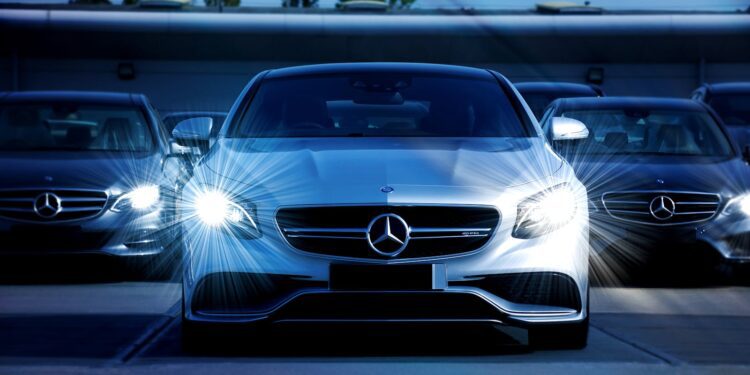Imagine a world where the hum of electric motors replaces the roar of combustion engines, where city air is cleaner, and where transportation is not just a necessity but a step toward a sustainable future. This isn’t a distant dream—it’s the reality being shaped by the electrification of transportation. From electric cars zipping through urban streets to heavy-duty trucks hauling goods with zero emissions, the shift to electric is transforming how we move. At the heart of this revolution is the Advanced Clean Transportation (ACT) Expo, a premier event showcasing the technologies and vision driving this change. Let’s dive into the electrifying world of electric transportation, explore its impact, and see why events like ACT Expo are lighting the way forward.
What Is Electrification, and Why Does It Matter?
Electrification in transportation means swapping out fossil fuel-powered vehicles for those running on electricity, typically stored in batteries or, in some cases, generated by hydrogen fuel cells. This shift is a cornerstone of global efforts to reduce greenhouse gas emissions, combat climate change, and improve air quality. Transportation accounts for roughly 28% of global CO2 emissions, with road vehicles being the largest contributor. By going electric, we can slash these emissions, especially when the electricity comes from renewable sources like solar or wind.
But it’s not just about emissions. Electric vehicles (EVs) are quieter, reducing noise pollution in bustling cities. They’re often cheaper to operate, with lower fuel and maintenance costs—electric motors have fewer moving parts than internal combustion engines, meaning less wear and tear. Plus, EVs are just plain fun to drive, with instant torque delivering smooth, zippy acceleration. For fleets, from school buses to delivery vans, electrification offers a path to lower total cost of ownership (TCO) while meeting sustainability goals.
The momentum is undeniable. In 2023, global EV sales hit 14 million units, a 35% increase from 2022. By 2030, EVs are projected to make up 45% of new vehicle sales worldwide. This growth is fueled by advances in battery technology, expanding charging infrastructure, and supportive policies like tax incentives and zero-emission mandates. Yet, challenges like upfront costs, charging availability, and supply chain constraints remain. That’s where events like the ACT Expo come in, bridging the gap between vision and reality.
The ACT Expo: Where Clean Transportation Takes Center Stage
The Advanced Clean Transportation (ACT) Expo is North America’s largest event dedicated to clean commercial transportation. Held annually, it brings together over 12,000 transportation leaders, including fleet operators, original equipment manufacturers (OEMs), technology providers, and policymakers. The 2025 edition, scheduled for April 28 to May 1 at the Anaheim Convention Center in California, promises to be a powerhouse of innovation, education, and networking.
What Makes ACT Expo Special?
ACT Expo is more than a trade show—it’s a hub for the future of transportation. Here’s why it stands out:
- Showcasing Cutting-Edge Tech: The expo features over 475 exhibitors displaying the latest in battery-electric, hydrogen fuel cell, and hybrid vehicles, alongside charging infrastructure, autonomous tech, and renewable fuels. Attendees can explore 200+ low- and zero-emission commercial vehicles, from electric school buses to Class 8 trucks.
- Hands-On Experience: Want to feel the power of an electric truck? ACT Expo offers test drives, letting attendees get behind the wheel of vehicles spanning all weight classes. This hands-on access helps fleet managers see how EVs perform in real-world conditions.
- Educational Sessions: With 160+ speakers and dozens of sessions, the expo dives deep into trends, policies, and technologies. Topics range from AI in transportation to hydrogen production to software-defined vehicles (SDVs) that update like smartphones. Notable 2025 sessions include “Developing Hydrogen Production to Reduce Fuel Costs” and “AI in Commercial Transportation,” featuring experts like Michele R. Mueller from the Michigan Department of Transportation and Jordan Choby from Toyota Motor North America.
- Networking Opportunities: ACT Expo is the meeting place for industry leaders. Whether it’s a fleet operator learning from peers or a startup pitching to investors, the event fosters connections that drive progress. Past attendees have praised the peer-to-peer learning and the chance to meet “influential and progressive leaders.”
- Product Launches and Announcements: The expo is known for major reveals. In 2024, Daimler Truck unveiled an autonomous battery-electric Freightliner eCascadia, while ZM Trucks debuted five new zero-emission models. Expect similar game-changers in 2025, with companies like BorgWarner showcasing innovations like the iM-575 integrated inverter-motor drive module, ideal for heavy-duty EVs.
ACT Expo 2025 Highlights
This year’s expo is set to be bigger than ever, reflecting the rapid growth of clean transportation. Key highlights include:
- Focus on Electric Trucks and Charging: Electric trucks, from Class 4 vans to Class 8 tractors, will dominate the show floor. Companies like Delta are showcasing megawatt charging systems (600kW to 3MW) with up to 16 ports, designed for fleet depots.
- Hydrogen and Hybrid Solutions: While battery EVs lead, hydrogen fuel cell vehicles are gaining traction, especially for long-haul applications. Sessions will explore hydrogen production and its role in reducing fuel costs.
- Sustainability and Policy: With California’s zero-emission mandates and federal incentives like the Inflation Reduction Act, ACT Expo will unpack how policies are shaping the market. Attendees can learn about funding opportunities and regulatory compliance.
- Real-World Case Studies: Fleets like Sunline Transit, which has navigated the transition to electric and hydrogen, will share practical insights. These stories highlight the importance of tailoring solutions to specific regions and needs.
ACT Expo isn’t just a showcase—it’s a catalyst. It’s where fleets discover cost-effective ways to electrify, where innovators find partners, and where the industry aligns on a shared goal: a cleaner, smarter transportation future.
The Big Picture: Electric Transportation Today
Electric transportation is no longer a niche—it’s mainstream, spanning personal cars, public transit, and commercial fleets. Let’s break down the key areas where electrification is making waves.
1. Passenger Electric Vehicles
Electric cars like the Tesla Model 3, Rivian R1T, and Ford Mustang Mach-E have become household names. They offer ranges exceeding 300 miles, fast charging (20-80% in under 30 minutes), and features like over-the-air updates. For consumers, EVs mean lower running costs—electricity is cheaper than gasoline, and maintenance is minimal. Governments are sweetening the deal with rebates and tax credits, though challenges like charger reliability and upfront costs persist.
2. Electric Buses
School and transit buses are going electric, driven by health and environmental benefits. Electric school buses, like those from GreenPower Motor showcased at ACT Expo, protect kids from diesel exhaust, which is linked to asthma and cognitive issues. The Electric School Bus Initiative aims to electrify the entire U.S. fleet by 2030, with 12,000+ electric buses already funded. Transit agencies, like Sunline Transit, are also adopting electric and hydrogen buses, cutting emissions in urban areas.
3. Commercial Fleets and Trucks
The commercial sector is where electrification faces its toughest test—and biggest opportunity. Heavy-duty trucks, like the Freightliner eCascadia or ZM Trucks’ Class 8 models, are proving EVs can handle long hauls and heavy loads. Companies like Navistar are pushing electrification with models like the International eMV Series, while Toyota is scaling up hydrogen fuel cell trucks for port operations.
Charging infrastructure is critical here. Solutions like Delta’s megawatt chargers and BEAM’s solar-powered EV ARC systems (no grid connection needed) are making fleet electrification feasible. Fleets are also leveraging AI and software-defined vehicles to optimize routes, reduce energy use, and extend vehicle lifespans.
4. Last-Mile Delivery
From Amazon to UPS, delivery vans are going electric to meet urban noise and emission regulations. Models like the Class 4 battery-electric van from ZM Trucks offer better cost-per-mile and driver comfort, ideal for city centers. Charging depots, like Zeem Solutions’ planned facility near Port Newark, are popping up to support these fleets.
5. Emerging Technologies
Beyond batteries, hydrogen fuel cells are gaining ground for applications where range and refueling speed matter. Toyota’s fuel cell tech, set to hit trucks in 2023, offers over 300 miles of range at 80,000 lbs. Autonomous driving, powered by AI, is also converging with electrification. Waymo and Plus are testing Level 4 autonomous electric trucks, promising safer, more efficient freight transport.
Challenges and Solutions
Electrification isn’t without hurdles. Here are the big ones, along with how the industry is tackling them:
- Upfront Costs: EVs cost more upfront than diesel vehicles, though TCO is often lower. Solution: Incentives like the U.S. Clean Heavy-Duty Vehicle Program and California’s JETSI fund purchases and infrastructure.
- Charging Infrastructure: Range anxiety and charger availability are concerns, especially for long-haul trucks. Solution: Megawatt charging, solar-powered systems, and depot expansions are scaling up.
- Battery Production: Mining for lithium and cobalt raises environmental and ethical issues. Solution: Recycling programs and research into sodium-ion batteries aim to reduce reliance on scarce materials.
- Grid Capacity: Mass electrification strains power grids. Solution: Smart charging, energy storage, and renewable integration (like wind and solar) balance demand.
- Fleet Transition: Switching to EVs requires planning and training. Solution: ACT Expo’s case studies and peer learning help fleets navigate the shift.
The Positive Impact: A Cleaner, Healthier Future
Electrification is a win for people and the planet. Cleaner air means fewer respiratory illnesses—diesel exhaust is a known carcinogen. Lower emissions slow climate change, protecting ecosystems and communities. For businesses, EVs cut costs and boost brand appeal, as consumers favor sustainable companies. For drivers, EVs offer a smoother, quieter ride, reducing fatigue.
Take Sunline Transit’s story from ACT Expo 2021. By testing electric and hydrogen buses, they found what worked for their desert region, cutting emissions while keeping service reliable. Or consider the Port of Los Angeles, where Toyota’s fuel cell trucks are replacing diesel, saving 690,000 gallons of fuel annually. These are real-world wins, scaled up by events like ACT Expo.
Why PositivePhil Loves This Movement
At PositivePhil, we’re all about inspiring action and celebrating progress. Electrification embodies that spirit—innovators, dreamers, and doers coming together to solve big problems. Events like ACT Expo amplify this positivity, showcasing solutions that don’t just work but inspire. Whether it’s a fleet manager test-driving an electric truck or a startup unveiling a game-changing charger, the energy at ACT Expo is contagious. It’s proof that we can build a future where transportation doesn’t harm the planet but lifts it up.
Looking Ahead: The Road to 2030 and Beyond
The electrification of transportation is accelerating. By 2030, expect:
- Mass Adoption: EVs will dominate new vehicle sales, with trucks and buses catching up to passenger cars.
- Charging Everywhere: From megawatt depots to solar-powered chargers, infrastructure will match demand.
- Smarter Vehicles: AI, autonomy, and software-defined vehicles will make fleets more efficient and adaptable.
- Policy Push: Stricter emissions rules and bigger incentives will drive investment.
- Global Impact: Emerging markets will leapfrog to EVs, bypassing fossil fuel infrastructure.
ACT Expo will remain a beacon, guiding the industry through this transition. Its blend of innovation, education, and collaboration ensures that electrification isn’t just a trend but a lasting transformation.
Join the Movement
Ready to plug into the electric future? Start by exploring the ACT Expo (April 28-May 1, 2025, Anaheim, CA). Whether you’re a fleet operator, policymaker, or just curious, it’s the place to see electrification in action. Can’t make it? Follow PositivePhil for more stories of innovation and impact, and check out resources like the Electrification Coalition or Electric School Bus Initiative to learn how you can support clean transportation.
The road to a cleaner world is electric, and we’re all invited for the ride. Let’s power up and make it happen!


















